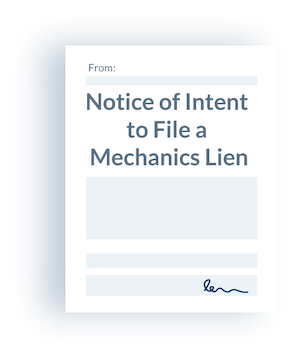
A recent article outlined a proven technique to ensure that you secure payment on virtually every project. This relatively simple formula consists of 5 simple steps: Protect, Monitor, Warn, Secure, Enforce.
This post focuses on the third step: Warn.
Notices of Intent to Lien Are Effective
Although Notices of Intent to Lien, or as we like to call them “NOIs”, are only required in nine states, research has shown that they are quite effective even in the states in which these notices are not specifically required. A notice of intent to lien is a document sent when payment is past due, and works to inform the party to whom it’s sent that a lien will be placed on the project property if payment is not received within a certain period of time.
Notices of intent are cost effective documents for parties in the construction industry who have not received payment because there is generally no need to file an NOI, or to send the notice by a particular mail-type. Further, they are very effective because they harness the power of the mechanics lien to induce payment – rather than making general requests for payment like traditional demand letters. This notice is also effective because it can be used to motivate parties other than the party with whom the notifying party contracted. For example, if a prime contractor debtor is not responding to numerous requests for payment, a notice of intent to lien can be sent to the home owner – after all, it’s their property that would be subject to a further mechanics lien. By doing this, the parties higher up the payment chain will put pressure on the party that owes the money, and encourage payment. In fact, our research shows that around 50% of the notices of intent delivered through Levelset have gotten consumers paid quickly, without needing to file the mechanics lien itself!
Consider Using Software to Manage and Send Notices of Intent
In order for notices to be truly effective, they must be sent on-time and to the correct parties. Using a software platform that helps you manage the process, and helps find the appropriate parties to notify can drastically increase the effectiveness of a notice policy. It is also worth considering that notices sent via certified mail can often be more effective than a regularly mailed document coming from a party that has previously contacted the debtor.
Instead of having to keep track of timelines, understand the potentially intricate legal requirements, and formulate and send effective notices, utilizing a thorough software platform designed to assist in these processes will allow you to work more efficiently, and show the debtor that you are serious about getting paid.



